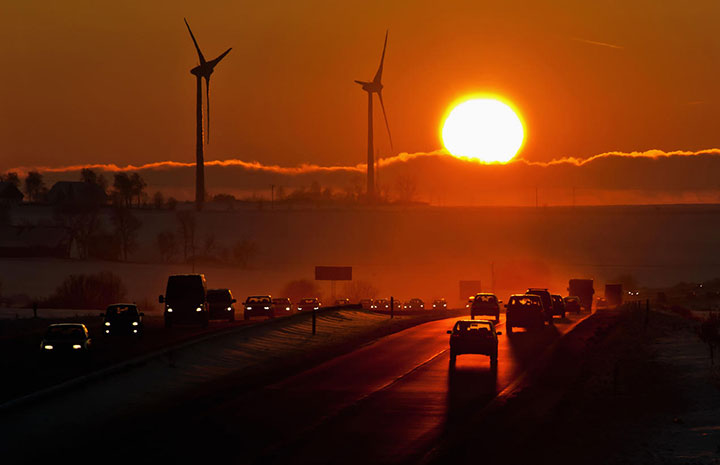APP
UNITED NATIONS: The supply of electricity from clean energy sources, such as solar, wind, or hydropower, must double until the end of this decade in order to mitigate global warming, according to a new, multi-agency report from the World Meteorological Organization (WMO), a Geneva-based UN agency.
“If this will not be achieved, climate change, extreme weather, and water stress may severely undermine our energy security and jeopardize renewable energy supplies,” the report read.
With the energy sector responsible for around 75 percent of global greenhouse gas emissions, WMO chief Petteri Taalas said that switching to cleaner energy generation and improving energy efficiency was “vital if we are to thrive in the 21st century”.
“Net zero by 2050 is the aim. But we will only get there if we double the supply of low-emissions electricity within the next eight years.”
The 2022 State of Climate Services, which includes inputs from 26 different organizations, zeroes in on energy – a key factor for realizing international agreements on sustainable development, climate change, and planet health.
Access to reliable weather, water and climate information and services, will be increasingly important to strengthen the resilience of energy infrastructure and meet rising demand, which has jumped 30 per cent over the past ten years.
“Time is not on our side, and our climate is changing before our eyes,” the WMO chief said, calling for “a complete transformation of the global energy system”.
Climate change directly affects fuel supply, energy production, and the physical resilience of current and future energy infrastructure.
Heatwaves and droughts are already putting existing energy production under stress, making it even more important to reduce fossil fuel emissions and illuminating the impact of more frequent and intense extreme weather, water and climate events.
Yet, despite these risks, just 40 per cent of climate action plans submitted by governments to the UN Framework Convention on Climate Change (UNFCCC) prioritize adaptation in the energy sector – and investment is correspondingly low.
A transition to renewable energy will help alleviate the growing stress on water supply, because the amount of water used to generate electricity by solar and wind is much lower than for more traditional power plants, either fossil-fuel or nuclear-based.
But current renewable energy pledges by countries fall well short of what is needed to reach the goal of universal access to affordable, reliable, sustainable and modern energy, by 2030, said WMO.
In 2020, 87 per cent of global electricity generated from thermal, nuclear, and hydroelectric systems, depended directly on water availability.
Meanwhile, located in high water stress areas, are 33 per cent of the thermal power plants reliant upon freshwater for cooling, around 11 per cent of hydroelectric operations; and approximately 26 per cent of hydropower dams.
And nuclear power plants, which depend on water for cooling, are also often situated in low-lying coastal areas – leaving them vulnerable to rising sea levels and weather-related flooding.
To put the world on a net zero trajectory by 2050, the report concludes that renewable energy investments must triple by then.
However, international public finance flows to developing countries in support of clean energy, has only decreased.
It fell in 2019, for the second year in a row, to $10.9 billion – which was 23 per cent lower than the $14.2 billion provided in 2018 – and less than half of the peak of $24.7 billion in 2017.
Africa is already facing severe effects from climate change, including massive droughts. To meet its energy and climate goals, in addition to a huge increase in adaptation, energy investment must double this decade, says WMO.
An annual infusion of $25 billion, equivalent to one per cent of all global energy investment, is now required, says the report.
Meanwhile, Africa is home to around 60 per cent of the most solar rich environments in the world, and African countries have an opportunity to capitalize on that untapped potential and be major players in the energy market moving forward.
Climate services in the energy generation field, may include planning the purchases of gas and electric power; managing emergency responses; and optimizing power plants from renewable sources – especially reservoirs and hydropower operations, it said.
In the energy sector, studies have demonstrated the economic value of very short-term, seasonal and sub-seasonal forecasts for fuel purchasing.
Temperature forecasts allow more accurate calculations that enable optimal power generation scheduling, to meet demands at a lower cost.
Meanwhile, daily, weekly and seasonal rain and stream flow forecasts, are helpful to optimize hydropower operations.
